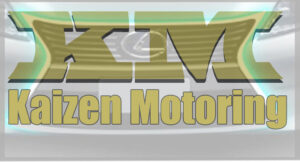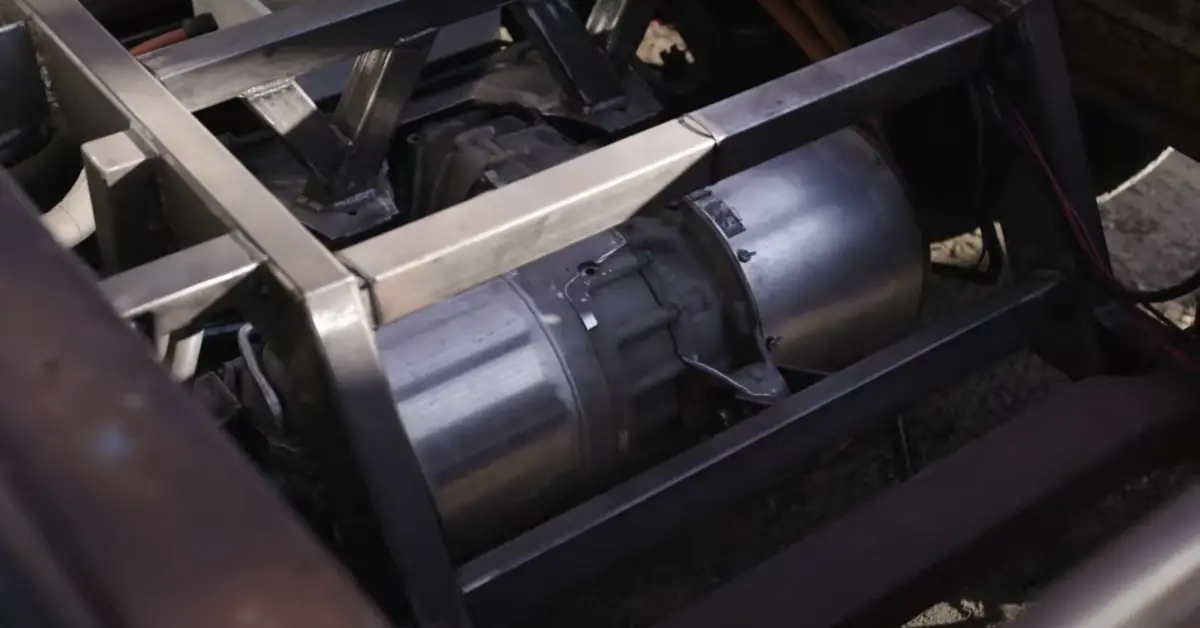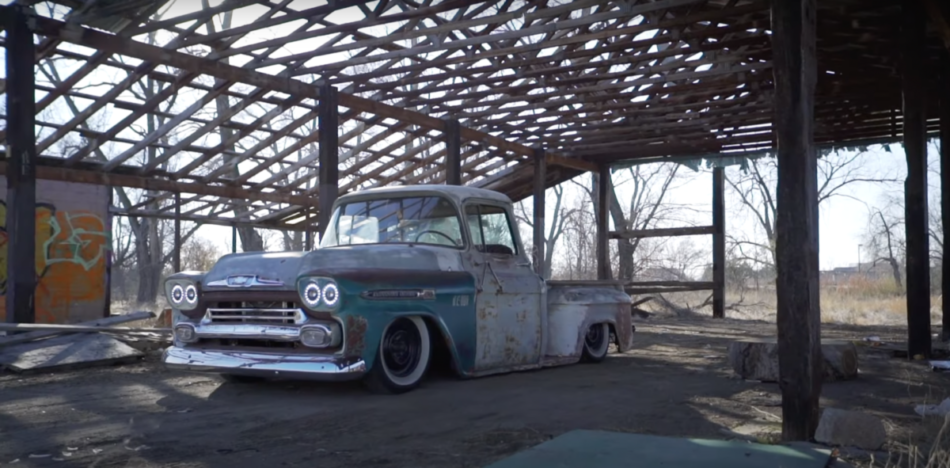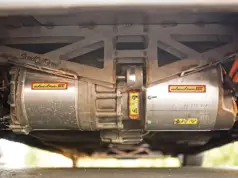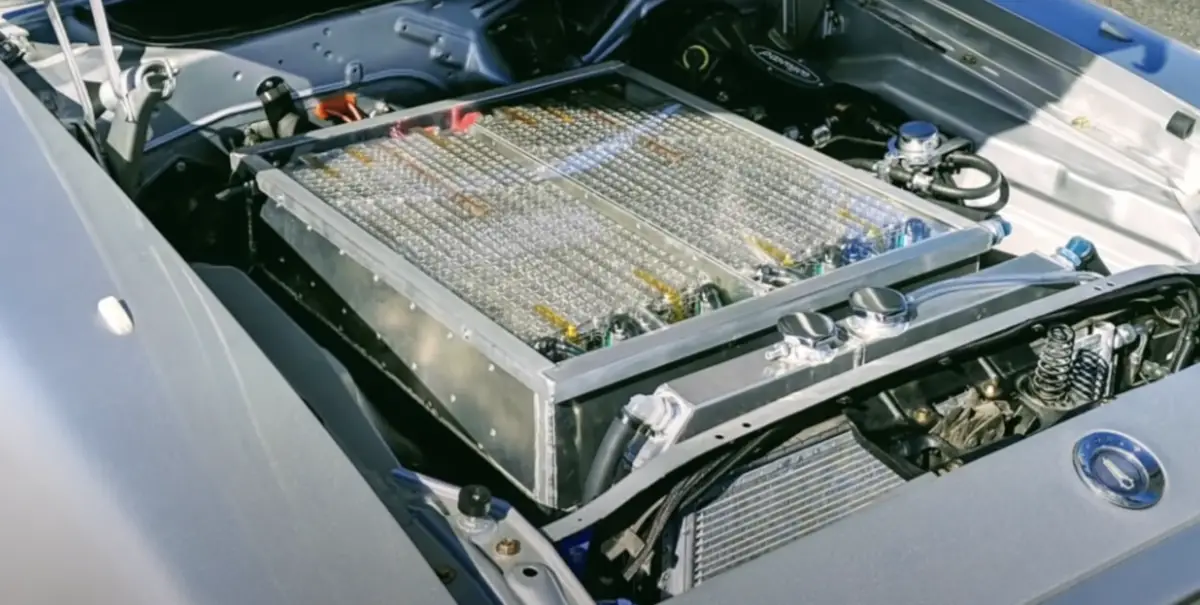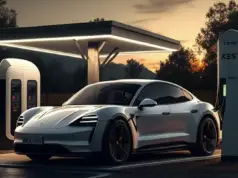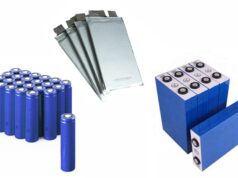Want all of the power and more of a mega cubic inch, turbo, or supercharged motor with the reliability of a modern sedan?
The answer may be to install a Tesla drivetrain or similar electric crate motor setup. But it can be an undertaking that will require fabrication, advanced electrical knowledge, and a big budget. The result will be 600-800 horsepower of reliable, rechargeable chaos that will behave like a docile commuter when needed. The Tesla Swap Complete guide below will help you decide if you are up for the challenge to Tesla Swap your Car.
What is a Tesla Swap?
A Tesla swap, at its core, is the process of replacing a vehicle’s traditional internal combustion engine (ICE) with a Tesla electric motor and battery system. This transformation turns a gas-powered car into a fully electric vehicle (EV), delivering the unparalleled performance, efficiency, and eco-friendliness Tesla is known for. But it’s not just about the mechanics—it’s about redefining what’s possible in automotive innovation.
Tesla swaps are gaining momentum among car enthusiasts for their ability to merge cutting-edge EV technology with the timeless appeal of classic cars, hot rods, and even off-road rigs. Imagine the blistering acceleration of Tesla’s electric power paired with the vintage charm of a 1960s muscle car or the rugged durability of a 4×4. It’s the ultimate marriage of old-school aesthetics and futuristic engineering.
At Kaizen Motoring, we believe in continuous improvement, which is why this guide dives deep into the Tesla swap process. From selecting the right donor car and motor to tackling wiring and cooling challenges, we’ve got you covered. Whether you’re curious or ready to electrify your ride, this guide will help you understand the journey ahead. Welcome to the future of custom
- Motor Type – what kind of motor should I use and where do I get it?
- Battery Options – Cells – Packs – Enclosures
- Transmission Options
- On-Board Charger
- DC/DC Converter
- Power Brakes
- Steering
- Thermal conditioning system for the battery
- Cooling system for the motor and inverter
- HVAC
- Emergency brake and/or parking pawl
- Throttle Pedal assembly
- Brake Pedal Switch
Motor Type – what kind of motor should I use and where do I get it?
EV West Tesla Motor kit $11,900
Complete Tesla Model S drive unit for sale as a complete drop-in package. This unit will run up to 400 Volts and 400 kW, delivering more power at an affordable price than many of the other packages available. This kit includes the Tesla motor, inverter, gearbox, control unit (EV Controls), throttle pedal, throttle pedal plug and pins, brake switch, brake switch wiring plug and pins, encoder plug, and pins, inverter plug and pins, axle clips, 2 axles, pre-charge relay, and pre-charge resistor.
Stealth EV Tesla Motor kit $10,000
The Stealth EV Tesla Drive Units handle the pre-charge system and main contactors directly from the internal control board (no external vehicle control unit required). The throttle pedal and brake pressure transducer link directly to the drive unit with NO CAN input required.
Revolt Systems small block Tesla crate motor swap kit $30,000
Motor from a Tesla, an inline gear reduction where a traditional transmission would bolt up behind an engine, and a universal joint waiting to be fixed to a driveshaft.
Battery Options – Cells – Packs – Enclosures
Battery with BMS -A suitable high-voltage battery will likely be the single largest expense of the build. It needs to be sized properly both in total energy capacity as well as instantaneous current capability to support the power you want to make.
EV West Tesla Model S Battery Modules $ 1580 per module ( 22.8 Volt, 5.3 kWh ) Dimensions: 3.1″ x 11.9″ x 26.2″
Capacity: 232Ah, 5.3kWh
Height: 3.1 Inches
Width: 11.9 Inches
Length: 26.2 Inches
Weight: 55 Pounds
How big a battery do I need for my EV Swap? Here are some very rough estimates for how many miles you can expect to travel for each usable kw/h of capacity your battery has.
- Economy driving = 3.2 mi/kWh
- Normal driving = 3 mi/kWh
- Spirited driving = 2.5 mi/kWh
- Racing = 1-2 mi/kWh
Example: 100 miles of range at a normal driving pace would require around a 35 kWh pack. Or about 7 modules of the above EV West Tesla Battery Modules
Transmission Options
The intended use will also play a factor here. Whether you intend to retain your manual transmission, use a simple gear reduction, or utilize an adapter plate to mate up an automatic transmission.
If you are using the Complete Tesla Rear Drive Unit, This will contain everything you need for your powertrain.
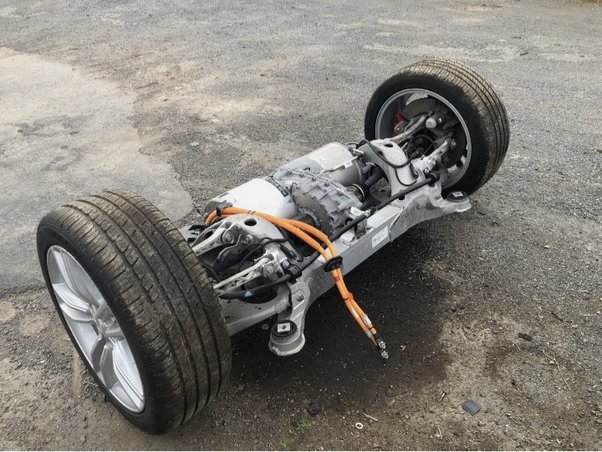
Torque Trends Torque Box bolt-on Transmission for Netgain Hyper9 Motor Setup
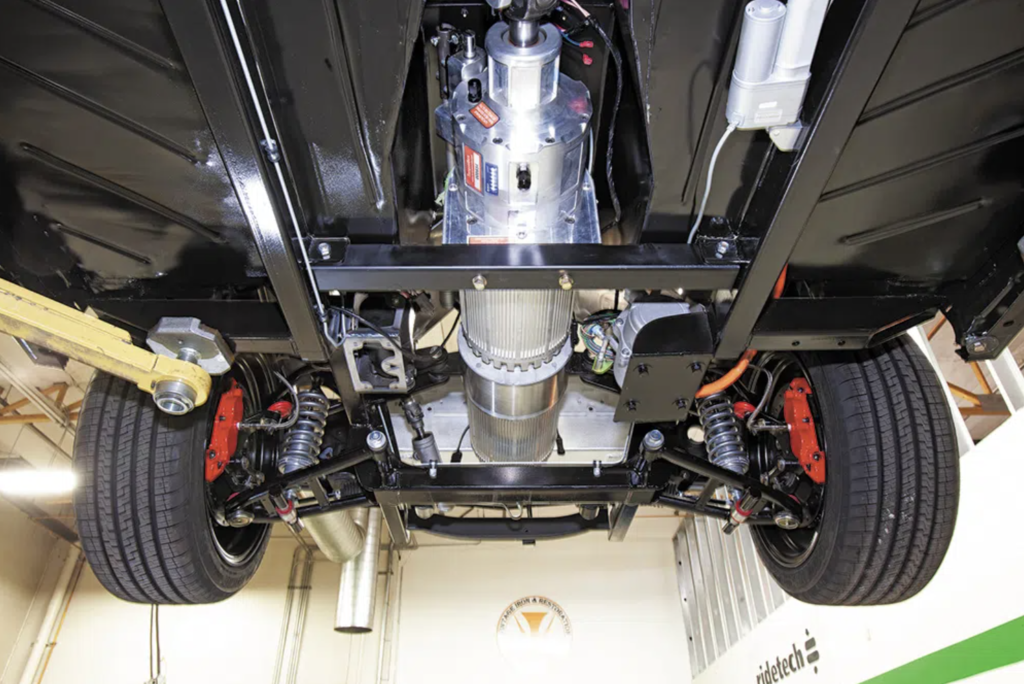
Conventional transmissions, manual or automatic are designed for internal combustion engines. The multiple gear ratios and ratio spread work well with the RPM-sensitive nature of small gas and diesel engines. For many years, these conventional transmissions were primarily three and four-forward speed units and in automatic, of course, incorporated a neutral, park and reverse mode as well. Over the last two decades, the number of forward speeds has continued to increase in an attempt to squeeze more efficiency out of a less-than-efficient engine design. As the number of forward speeds has increased (now up to ten forward ratios), the size and weight have also increased, and here is the PAIN! Electric car conversions are very weight sensitive and space is always at a premium.
Retaining the conventional multi-speed transmission when converting to electric power is wasteful to the extreme.
Electric motors as a rule are much higher in efficiency and make their peak torque right from a stop and over a much broader rpm range. This means that many electric car conversions could do very well with a smaller, lighter transmission package. In fact, most could do well with a single forward speed reduction gearbox (the ev – TorqueBox®). As an example, all Tesla vehicles use a single-speed gearbox. This is of course true of most all-new plug-in electric cars.
Also, brushless DC and all AC motor conversions do not need a reverse gear in the transmission as they can simply turn the motor in the reverse direction to back the vehicle up.
On-Board Charger
Unless you are building a dedicated race vehicle that never strays far from the pits, it will need to have an On-Board Charger. These modules allow you to connect to standard EV charging points either at home or in public areas.
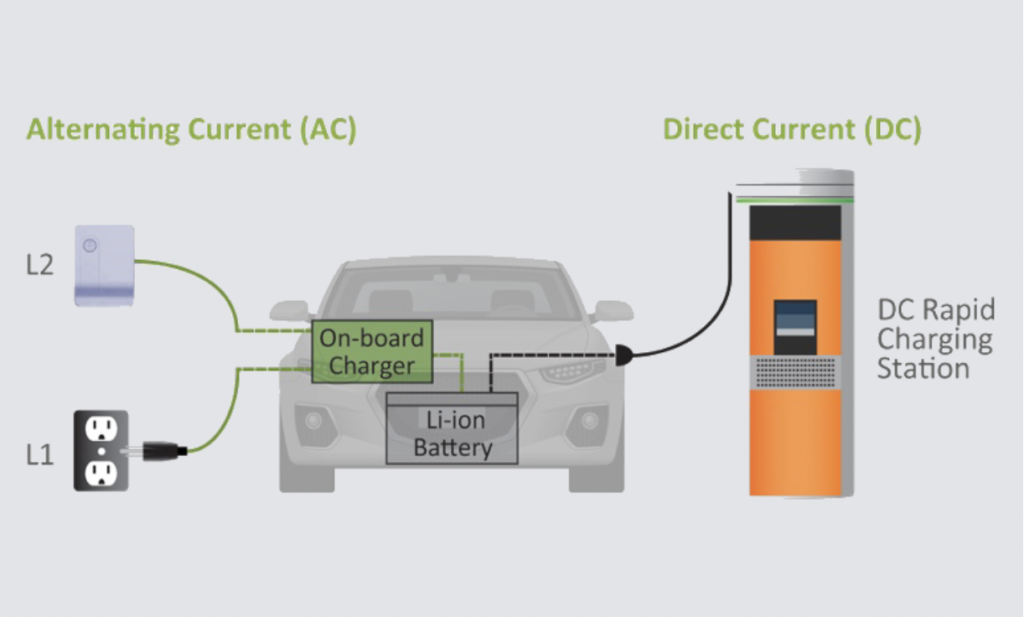
DC/DC Converter
Unless you are building a dedicated race vehicle that runs for very short periods and has a large enough 12v battery to not need to be charged during use, your EV will need to have a DC/DC converter to keep the 12V battery charged.
To determine what you need, for example, A stock RX8 has a 100A alternator. Multiply this by 13V (a more typical operating/charging voltage) and you get 1,300 watts of power. So whichever DC/DC converter we choose, must have at least 1,300 watts of 12V output power. This wattage may vary for your particular vehicle conversion, but this is a pretty universal alternator wattage for passenger cars to power your lights, wipers, radio, gauges/displays etc
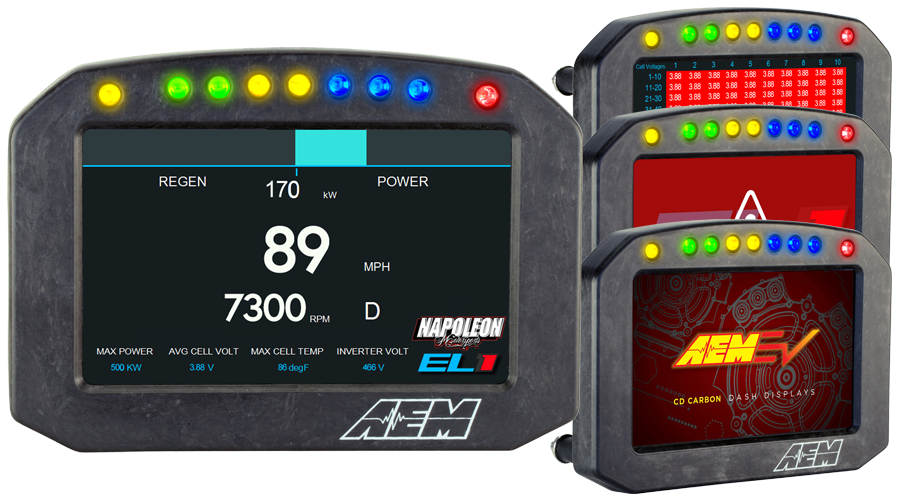
Power Brakes
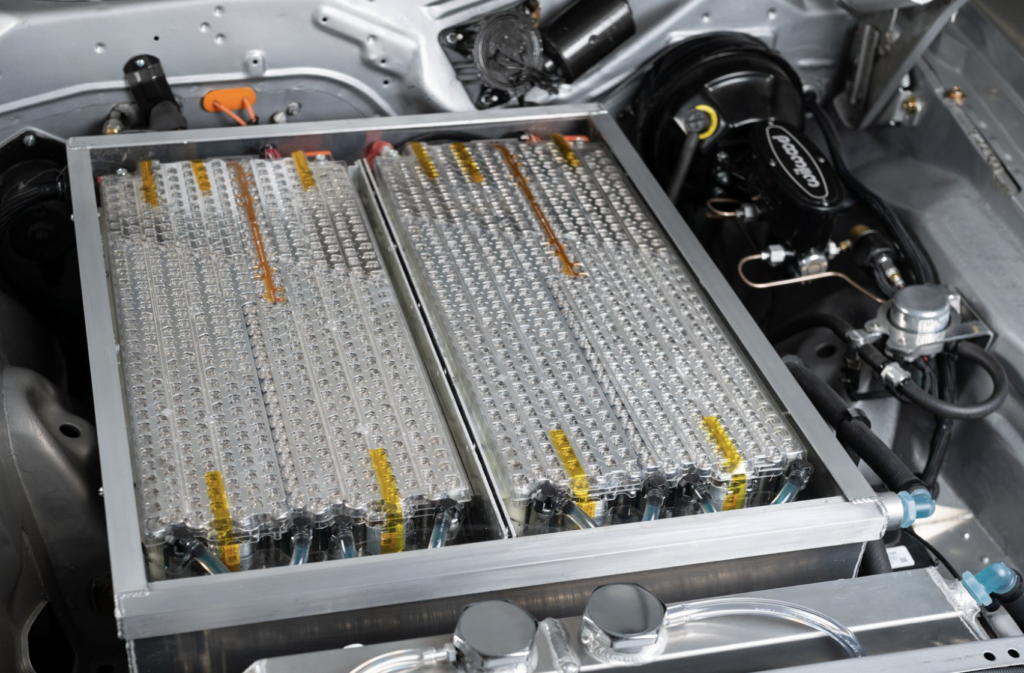
An electric motor does not produce a vacuum during its normal operation like a combustion engine. You will need a vacuum source supply for your power brake booster and possibly any other vacuum-operated accessories such as heater doors for cabin heating and air condition controls.
Source of vacuum for booster – How much vacuum do I need to run a brake booster?
Any brake booster in the world requires 18 inches of vacuum to operate at peak efficiency.
Electric Vacuum Pumps available – https://www.summitracing.com/parts/sum-760152
Additional Options
Another option if you only need brake booster vacuum and do not need vacuum to also run any HVAC controls would be to swap your brake booster for a Bosch iBooster. These can be salvaged from Tesla Model S and Model 3’s as well as some newer Honda.
Bosch iBooster

The Bosch iBooster is an electric brake booster system used in vehicles to enhance braking performance, especially in electrified and hybrid vehicles. It is designed to work in conjunction with regenerative braking systems commonly found in electric and hybrid cars.
Here’s a brief overview of how the Bosch iBooster works:
- Brake Boosting:
- The iBooster serves as an electromechanical brake booster that amplifies the force applied to the brake pedal by the driver.
- Unlike traditional vacuum-based brake boosters, the iBooster uses an electric motor to provide the necessary assistance, making it suitable for vehicles with electric or hybrid powertrains.
- Regenerative Braking Integration:
- In electric and hybrid vehicles, regenerative braking is used to recover kinetic energy during braking and convert it back into electrical energy to recharge the battery.
- The iBooster is integrated with the regenerative braking system to ensure seamless coordination between traditional friction braking and regenerative braking.
- Brake-by-Wire Technology:
- The iBooster operates on a brake-by-wire system, where electronic signals from the brake pedal are transmitted to the electric motor in the iBooster.
- This allows for precise control over braking forces and enables features like brake energy recuperation.
- Energy Efficiency:
- The integration of the iBooster with regenerative braking contributes to overall energy efficiency in the vehicle.
- The system optimizes the balance between traditional braking and regenerative braking, providing effective stopping power while maximizing energy recovery.
- Safety Features:
- The iBooster is designed with safety features to ensure reliable brake operation even in the event of electrical or system failures.
- Redundant systems and fail-safe mechanisms are often incorporated to maintain braking functionality.
Steering
Electric Power steering or convert your manual steering rack to power
https://turnonesteering.com/product/turn-one-electric-power-steering-kit
Thermal conditioning system for the battery
The temperature of the battery is important and it needs to be monitored and kept in a relatively tight window. If
it is too cold, it needs to be heated before charging or driving. If it is too hot it needs to be cooled. If you want to extract the absolute maximum performance from the battery it needs to be preconditioned to an exact temperature before use. This requires a fluid heater, a pump, a radiator, a fan, diversion valves, and a VCU to determine what to do and when to do it. The water pump for your battery enclosure can be controlled by something like the AEM VCU
Cooling system for the motor and inverter
The motor and Inverter will make heat and need cooling. It won’t be anywhere near as much as an IC engine makes but it still needs to be dealt with or the inverter will start de-rating the power to protect itself. The cooling system usually includes a cooling loop with a pump, radiator, and fan. In some systems, you may have separate loops for the motor and inverter.
HVAC
Some method of providing cabin heat for the occupants.
Unless you are building a race car with no heat or are in a warm climate, you are going to need to provide some method to generate cabin heat since there is no IC engine generating waste heat that can be used to keep the cabin comfortable.
Some method of providing air conditioning for the occupants. Unless you are building a race car with no A/C or live in a cool climate, you may want to provide A/C for the cabin. EVs don’t have a spinning engine to spin an A/C compressor so you have to install a compressor specifically designed for an EV.
Emergency brake and/or parking pawl
This is a big issue and it is almost never mentioned. EVs almost never have a parking pawl and you can’t leave them “in gear” so a quality E-Brake (preferably automatic activation) is an absolute must.
Throttle Pedal assembly
We have found late-model Ford pedals to be the most consistent and reliable addition to most conversion kits. 2016+ Mustang pedals work well. These also happen to be the same pedals Tesla uses on their vehicles.
Ford Part Number: CR3Z9F836C
Brake Pedal Switch
We like the Ford two-position brake switch from a 2016+ Mustang. These have two brake switch inputs that we use as inverse signals so that we have double confirmation signals, much like you do with a DBW Accelerator pedal.
Ford Part Number: GL3Z13480A
Though this will not cover every exact nut and bolt needed for your Tesla Motor Swap Conversion Kit, I hope this will provide enough details to get you on your way or maybe decide whether this is a project you still want to take on.
Though this is far from a complete list of parts and modifications needed to perform a Tesla / EV swap into your Hot Rod or Classic car, Hopefully, it has been helpful.
